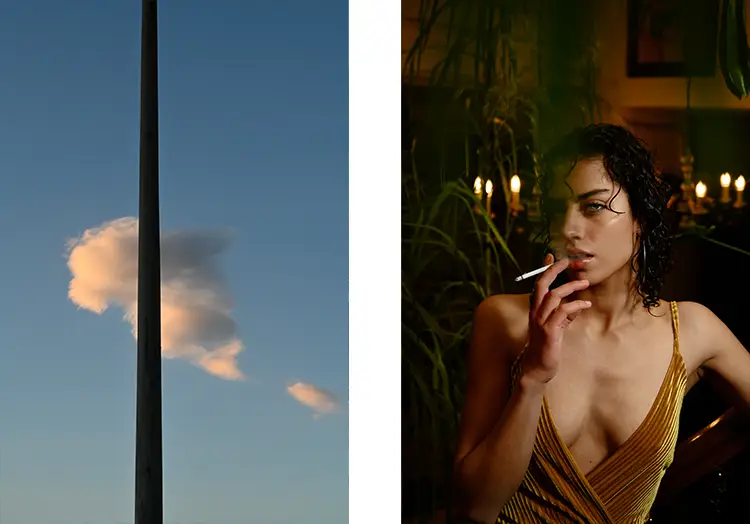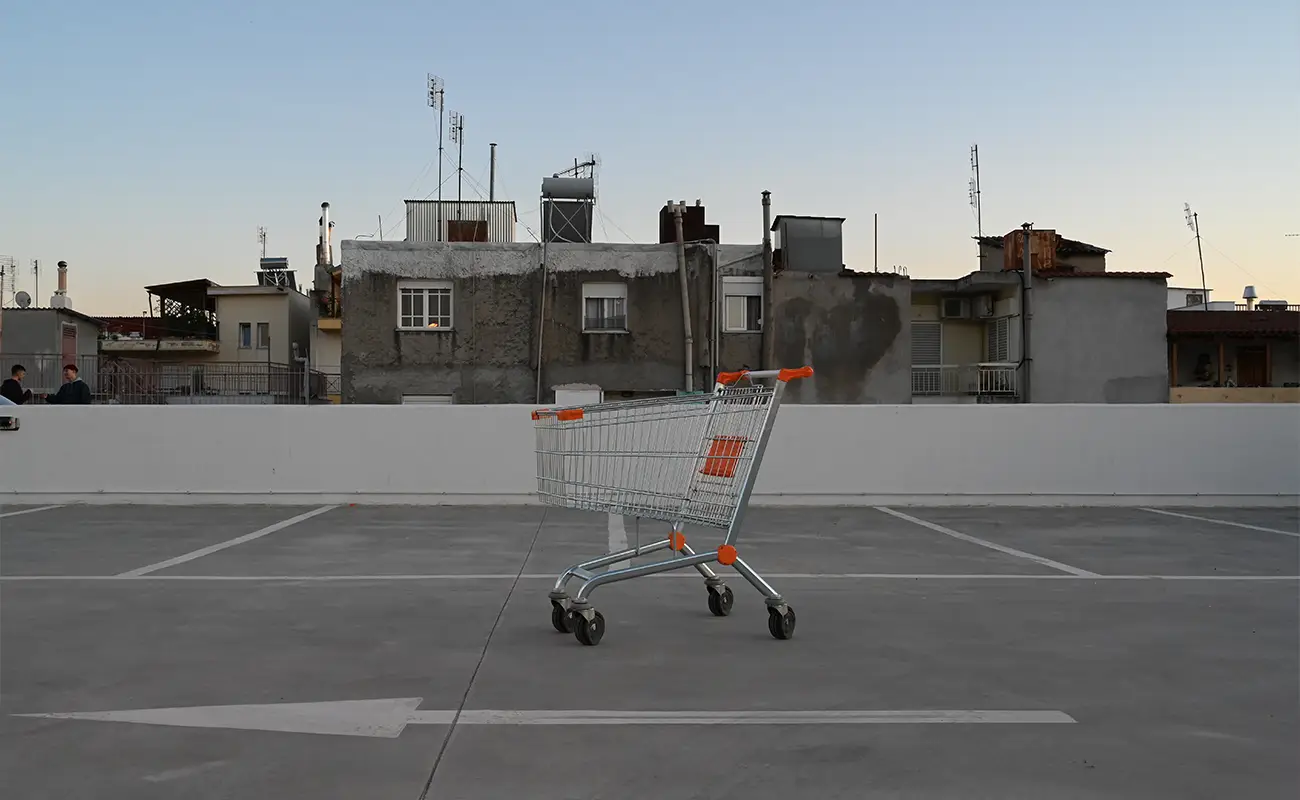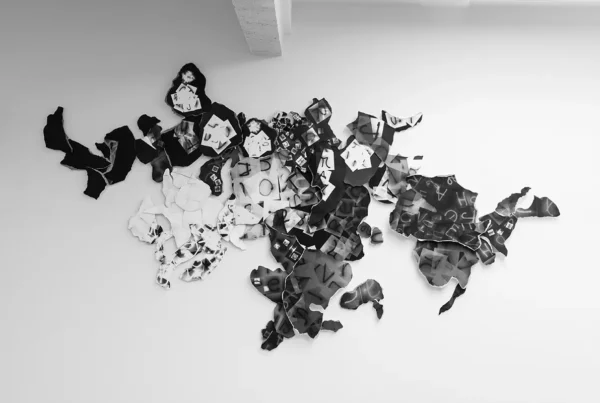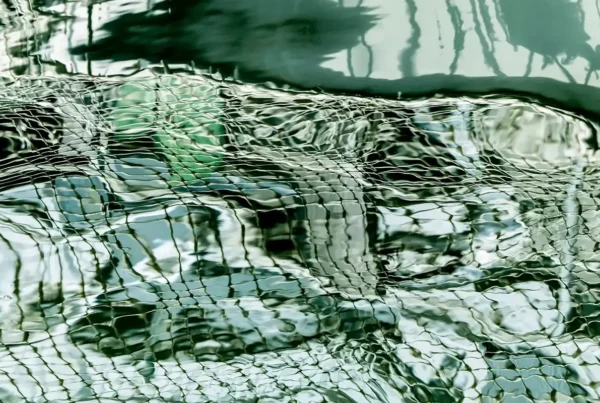“I want to capture the light. The light as it writes on every body, on every structure, the color it gives.”
A Vision Anchored in Emotion and Light
In the quiet corners of Thessaloniki, Greece, where urban stillness intersects with history, Pantelis Georgitsis crafts evocative images that capture more than just visual beauty—they channel deeply felt emotion and cinematic atmosphere. As an art photographer with a background in photography, graphic arts, and physical therapy, Georgitsis brings a layered perspective to his creative process. While his admiration for fine arts runs deep, it was photography—what he refers to as the “8th art”—that ultimately claimed his artistic devotion. His work is defined by emotional resonance, visual symbolism, and a signature use of dramatic lighting that transforms everyday encounters into poetic revelations.
Rather than chasing trends, Georgitsis draws from the raw fabric of daily life, turning internal and external moments into emotionally charged imagery. His photographs are shaped by an enduring fascination with the human body, fleeting feelings, and the silent dramas that play out in ordinary settings. Emotions become subjects, and light becomes a sculpting tool. Sometimes, his camera acts as a mirror, helping him understand his own states of mind; other times, it becomes a question—how will this image make me feel? He doesn’t aim to merely record scenes, but to construct visual experiences that reflect internal landscapes.
The cinematic quality of his photographs stems not only from his refined aesthetic choices but from an intentional pursuit of nostalgia, surrealism, and escapism. Whether capturing architectural symmetry, minimalist lines, or the delicate interplay of shadow and form, Georgitsis leans into moments that teeter between reality and dream. His attraction to architectural photography arises from a love for modern structure and minimal composition, often spotlighting symmetry and stillness with a reverent eye. Across his portfolio, natural light remains essential, becoming both subject and tool, dictating mood and movement in each frame.

Pantelis Georgitsis: Navigating Solitude Through the Lens
For Georgitsis, photography has always been more than technical precision—it is a vessel for emotional exploration and survival. During the COVID-19 lockdown, an intense period of isolation inspired one of his most poignant series to date, Anthropopause. Confined within the walls of his apartment, with only a parrot for company and fleeting walks permitted by government code, he found himself submerged in solitude. Yet from that isolation emerged a body of work that distilled the essence of that era. Titled Anthropopause, the series captured a world paused—a time suspended between fear, silence, and longing.
The series resonated with such authenticity and emotional weight that it led to an exhibition at the MOMus Museum. The entire collection was eventually acquired by the institution, signaling a significant milestone in Georgitsis’s career. These photographs, conceived during a personal crisis, translated a collective moment of stillness into visual poetry. It was not merely the aesthetics of the images that left an impression but the sense of inner monologue—an archive of loneliness, resilience, and the quiet resistance of creativity during global disruption.
What makes Anthropopause exceptional is its intimacy. Rather than capturing grand scenes or orchestrated sets, Georgitsis turned his limited environment into a stage where light, shadow, and silence played leading roles. The work is imbued with the tension of stillness, the psychological impact of disconnection, and the catharsis of creating in confinement. Through this body of work, he not only documented a unique period in history but also revealed his capacity to find inspiration and beauty within limitation.
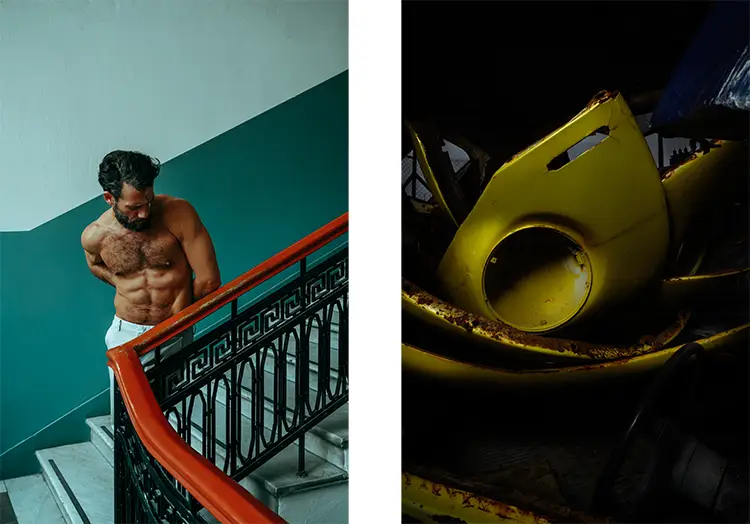
The Architecture of Influence and Process
Georgitsis’s creative space is a carefully arranged ecosystem where inspiration, order, and mood coexist. Lighting remains his most indispensable tool—whether soft, ambient natural light or strategically positioned artificial sources. He relies on clean workspaces, structured routines, and music to maintain a focused and emotionally tuned creative flow. Music, in particular, plays a crucial role in shaping the tone of his sessions, often serving as an unseen collaborator that directs the tempo and emotion of his shoots and edits.
An inspiration board—digital or physical—helps him channel and revisit creative impulses. He surrounds himself with the work of artists who move him, drawing influence from a diverse spectrum that includes Francesca Woodman’s haunting imagery, Tim Walker’s whimsical worlds, and Andreas Gursky’s monumental compositions. Architectural giants like Tadao Ando and Zaha Hadid also influence his love for structure and form, while the atmospheric lighting in Christopher Nolan’s films continues to shape his visual language. These references do not dictate his style, but they form an emotional and aesthetic compass guiding his exploration of space, body, and light.
Discipline is as important as inspiration. Georgitsis schedules specific times for editing and creative planning, treating photography not just as a spontaneous act but as a sustained practice. This structure allows him to stay attuned to the emotional intent behind each image while avoiding creative burnout. Accessibility to his gear is essential, with every lens and accessory kept within arm’s reach, ready to respond to that fleeting moment when light hits just right. For Georgitsis, creating is not only about vision—it’s about readiness and presence.
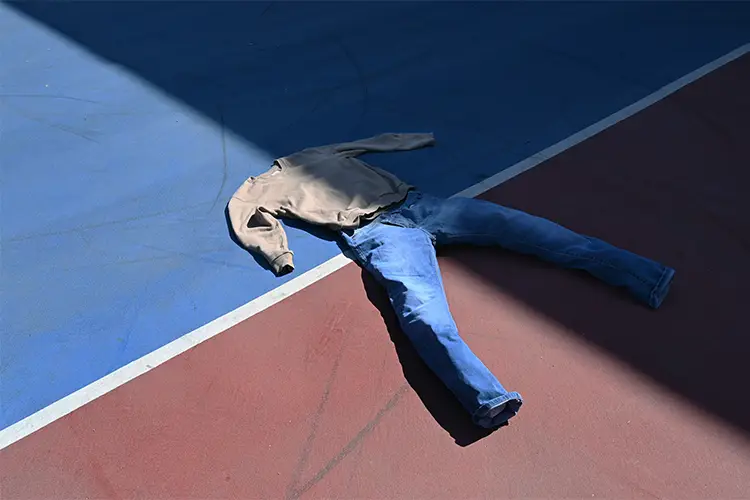
Pantelis Georgitsis: Between the Glare and the Shadows
Every artist has moments where dreams and reality briefly align. For Georgitsis, one such moment materialized unexpectedly when he was commissioned for a photoshoot by The New York Times. The subject was politically charged—a journalist who had uncovered a scandal within the Greek government. Though the shoot was completed and contracts signed, the piece never reached publication due to withheld information. Still, the experience marked a pivotal point in Georgitsis’s artistic journey. It was proof that his work could speak across borders, that his lens could be trusted to tell complex, sensitive stories with nuance and visual integrity.
Even without public release, the shoot’s significance endures. It symbolized an intersection between art and journalism, showing how photography can function not only as an expressive medium but also as a tool for truth-telling. Georgitsis approached the assignment with his characteristic emphasis on emotional tone and light, allowing the images to carry both gravity and vulnerability. The fact that it remains unpublished only adds to its mystery, yet in his mind, it affirmed his belief in photography’s power to probe beneath the surface of public narratives.
For Georgitsis, this experience reinforced his unwavering love for the medium. Photography offers him something immediate, something irreplaceable—the pulse of a moment, the way light clings to flesh or concrete, the way shadows stretch like secrets across a frame. All other forms of artistic expression, he feels, have faded in relevance for him. What remains is the camera, the image, and the unrelenting desire to preserve the ephemeral. It’s not simply about taking photos—it’s about capturing that elusive space where light, memory, and emotion converge.
